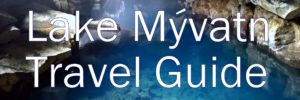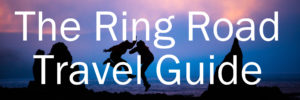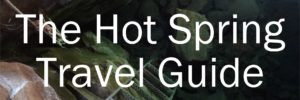Fishing in Iceland
Many fishing enthusiasts around the world dream of fishing in Iceland but are intimidated by the sky-high cost of salmon fishing in Iceland’s waters. But there are world-class lakes and a few rivers where you can fish without having to take out a second mortgage. Some of Iceland’s lakes are filled with Arctic char and/or brown trout, and you can enjoy fishing these species in beautiful waters amongst absolutely stunning surroundings. All you need to enjoy fishing in Iceland is a rental car, fishing gear, and a fishing license.
Getting Your Fishing License in Iceland
The best and most cost-efficient way to fish in Iceland is to buy Veiðikortið, also known as the Fishing Card. As of 2024, the card has access to 36 lakes around Iceland. When you buy your Fishing Card, you will receive the card that you need to carry with you when fishing, a booklet with information about all the lakes that are included with the card, and a little sticker you need to place on your dashboard visible for a park ranger or landowner. Do not glue it to the rental car. The current cost for the Fishing Card is 9.900 ISK ($72 USD) which is an absolute bargain! The Fishing Card acts as your license to fish in Iceland.
When you are driving around in Iceland, you will come across many lakes where fishing might even be free or simply require you to pay a minimum amount. You only have to find the landowner and ask.

Fish Species in Iceland
All fish that can be caught in Iceland are part of the Salmonidae family. Of this family, salmon are the largest species and, by far, the most expensive one to fish. There are no pike, perch, or bass in Iceland.
Freshwater fish that can be caught in Iceland:
- Brown trout
- Arctic char
- Atlantic salmon
Saltwater fish that can be caught in Iceland:
- Haddock
- Mackerel
- Atlantic cod
- Catfish
- Pollock
- Halibut
If you want to fish for salmon in Iceland, you need to apply for a license well in advance. Ideally, you’d apply in November or December of the year before you want to visit. Salmon fishing opens around the 1st of June (depending on the river) and closes at the end of September. Salmon fishing licenses will need to be purchased from the river where you intend to fish.

There are a few absolutely fantastic sea trout (also called brown trout) rivers to be fished in Iceland. The best ones are found around Kirkjubæjarklaustur. The same rules apply to sea trout fishing as salmon fishing, with a few exceptions. Sea trout fishing is expensive, though not as expensive as salmon fishing, and for most rivers, you will need to apply far in advance to secure a license.
Sea trout fishing starts 1st of April and closes at the latest on the 10th of October. The later you fish, the greater the chance to catch the big ones.
Brown trout and Arctic char can be found in many lakes. Þingvellir has the biggest brown trout and you will have the greatest chance to catch them on the north side early in the season and you can do that with the Fishing Card. There you will also have a few different species of Arctic Char. On the south side of the lake, there is a small area where big, big brown trout is the norm but it requires a special license and is not covered by the Fishing Card.

Fishing Gear
As catch-and-release fishing is growing in popularity, so is fly fishing. For fly fishing brown trout and Arctic char, a 5-weight rod would do fine while salmon and sea trout require heavier rods. If you plan to fish late in the season, you might do better with an 8 weight in order to hold up against any possible winds. There are waters where only fly fishing is allowed. Be informed about what rules apply to where you are fishing and make sure to do your research ahead of time.

Spinning rods are often used in Iceland, and Toby Spoons are probably the most commonly used lures. Spinners are excellent for catching Arctic char. Bait fishing is allowed here and there.
Important: When you arrive in Iceland, you need to disinfect your fishing gear. When you arrive at the airport and you are on your way through customs, you’ll need to stop at a small booth to your left, which is the red zone. Tell the customs agent you have fishing gear with you, and they will see that your gear is disinfected for a small cost. In the past, fishing gear would be disinfected by being dipped in black mud that you needed to rinse off as soon as you had the chance. Today, the disinfection process consists of a colorless and odorless spray.
Fishing at Veiðivötn
There is one fishing area that deserves special mention, and that is Veiðivötn. This an area up in the Highlands with 50 lakes, all full of brown trout and Arctic char. It’s an oasis with fantastic bird life, nature, and world-class fishing – a place where you can truly get away from it all. There is a campsite in the middle of the system where you can rent a cabin, rent a sleeping bag space, or set up a tent or camper van. The area is about 20 km (12.4 miles) long and 5 km (3.1 miles) wide.
When you drive to Veiðivötn, you pass black mountains and drive on black, harsh roads which makes it a very surreal ride. When you arrive at Veiðivötn, you will be in awe, because the scenery is utterly breathtaking. When driving around the lake system, you will be driving on fantastic roads, catching glimpses of craters and stunning rock formations.
If you plan to go to Veiðivötn, you must have a 4×4 vehicle. In the area, there are a few places you can ford small rivers but keep in mind that no insurance covers any damage caused while fording a river, and all off-road driving is strictly forbidden. There are routes where you do not have to ford a river. The biggest fording is just before you reach the campsite but you can drive east and around the system and still reach camp.
The fishing takes place along the banks of the many lakes (boating is not allowed) so waders are recommended, but remember to fish really close to the shore before wading out. A typical brown trout is around 5 to 6 pounds with the biggest ones hitting double digits. Almost every year there are fish over 20 pounds being caught. The trout species found here is also one of the oldest trout in Europe. It’s even called Ísaldarurriða, which means ‘ice age trout’ and is considered to be particularly strong.
It’s a 185 km (115 miles) drive from Reykjavík to Veiðivötn. When you hit the Highlands and reach Hrauneyjar (see map), remember to fill up your vehicle and stock up with anything you might need because this is the last outpost before entering a particularly remote area of the Highlands. After Hrauneyjar, there are no other gas stations, restaurants, or stores. The park ranger house at Veiðivötn might have a few flies and spinners you can buy, but nothing more is available beyond this point.
After Hrauneyjar you have a few kilometers left on paved roads but after that, a very rough road takes over, all the way to Veiðivötn. Take your time, keep your eyes open, and drive very carefully. When driving there, you can choose from two routes, both well-marked on the map above.
If you want to fish in magical Veiðivötn, you need to apply very early because all the licenses sell very fast.

Conclusion
If you want to fish in Iceland, the easiest way is to get a 4×4 Camper, secure your Fishing Card, and fish all around Iceland without a hassle.
Wherever you go fishing, drive carefully and give nature all your respect, take the Icelandic pledge and hold tight to your rod for you never know, you might catch a monster!
Tight Lines! #GoIceland
Iceland Travel Guides



If you like our videos, please subscribe to our YouTube channel!
